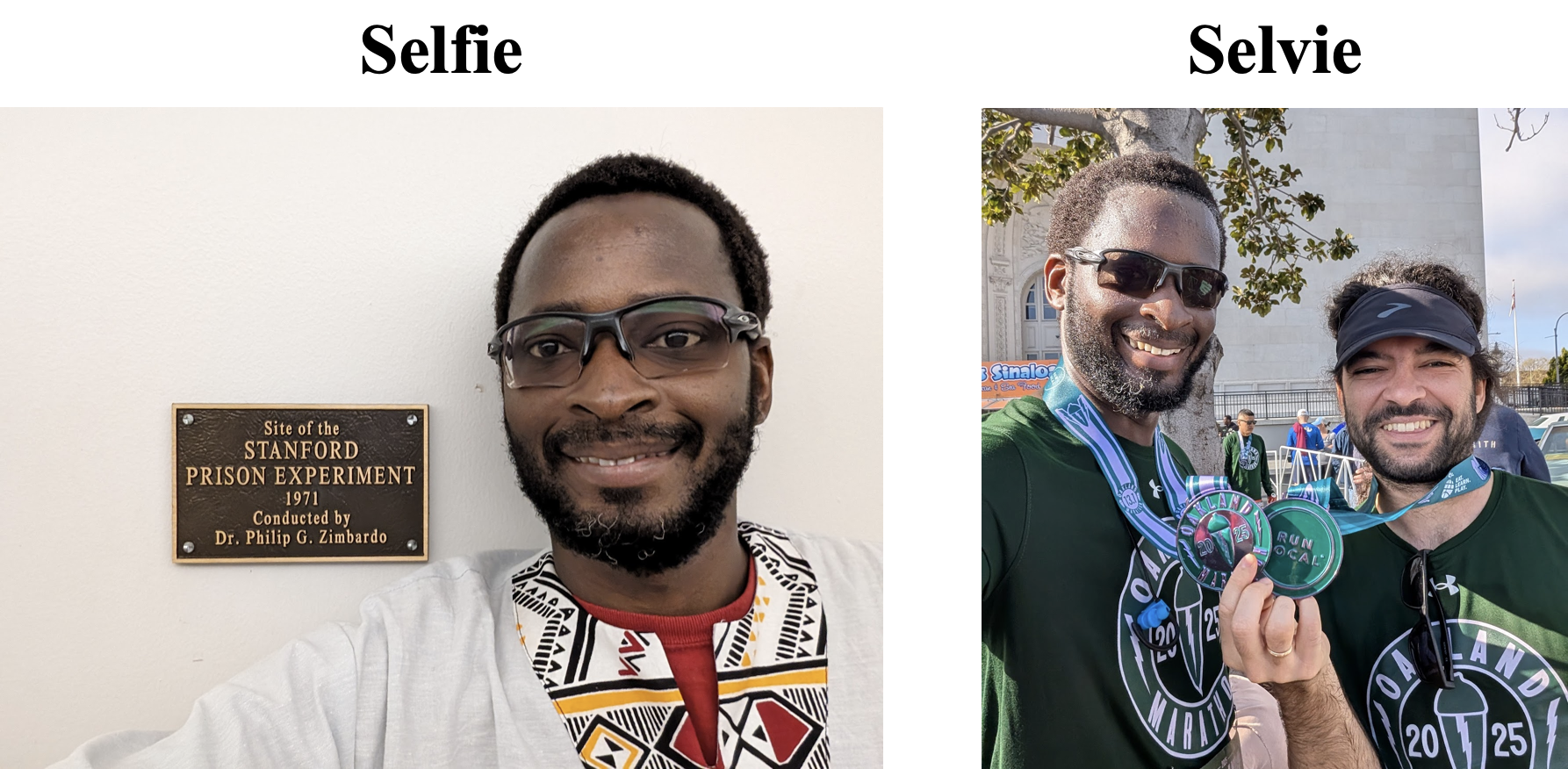Selfie, Selfies, Selvie, Selvies
- Selfie /ˈsɛl.fi/ n.: A photograph taken by a person that features only themselves as the subject. Plural: Selfies.
- Selvie /ˈsɛl.vi/ n.: A photograph taken by a person that includes themselves along with one or more other subjects. Plural: Selvies.

The word selfie has gained popularity in recent years, culminating in its inclusion in major dictionaries such as
Merriam-Webster,
Cambridge,
and Oxford,
as well as its selection as Word of the Year in 2013.
Most dictionaries define selfie as "a photograph that one has taken of oneself" (Cambridge, Oxford), without specifying whether other subjects may appear in the photograph. Merriam-Webster's definition is more inclusive, describing a selfie as an "image that includes oneself (often with another person or as part of a group)".
Several terms have emerged to address this lack of specificity. For example, in 2014, Business Insider referred to selfies with multiple subjects as "usies" .
Similarly, the terms "groufie" and "wefie" were respectively trademarked by Huawei and Samsung to describe group selfies.
Terms like “usie” and “groufie” omit the critical “self” component, obscuring the defining feature of a selfie—that the photographer is also a subject in the image. While “wefie” does imply inclusion of the photographer through the pronoun “we,” this implication is indirect and lacks the explicit self-reference that gives the term “selfie” its linguistic precision. Moreover, “groufie” and “wefie” appear to be more commercially motivated than conceptually rigorous, having originated as trademarks rather than organic linguistic developments. As such, none of these alternatives adequately preserve the core idea of self-portraiture that the term “selfie” conveys.
Here, I propose the term selvie, derived from selfie, to designate images that include the photographer along with one or more additional subjects. This neologism follows standard English morphological derivation and preserves both the self-referential and plural characteristics of the image.